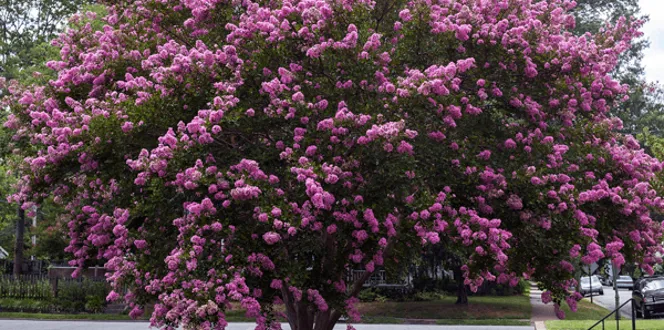Ever wonder why your trees can stand strong through many crazy storms, but then there’s that one tree that doesn’t seem to make it during a particularly nasty, heavy rainstorm?
You might be wondering why some trees fall in a storm and others don’t.
Sure, forceful winds, snow, and ice can topple a weak tree, but what about an extensive amount of rain?
The impact of excess rainfall on trees can certainly be a concern when you have trees you don’t want to lose or that are near enough to your home to cause potential damage if they were to fall.
Let’s talk about excess soil moisture and what you can do to better understand this scenario and how you can best protect your trees.
Impact Of Saturated Soils On Trees
When your soil becomes supersaturated, that water replaces the oxygen in the soil. This stresses the tree because tree roots need oxygen to function properly.
There are short-term and long-term impacts on your trees as a result of waterlogged soil.
Short-Term Impact
The short-term impact of excess soil moisture on trees has to do with the roots.
A tree’s roots are its anchors. So when the wind blows, those roots hold the tree through the pushing and pulling of the wind. That’s what keeps your tree upright.
But when the soil becomes supersaturated and almost soup-like it loses its strength and the roots slip through the soil more. This is what can contribute to tree failure if strong winds were to blow after or during massive rainfall, or if the tree is out of balance due to a lean or asymmetric canopy.
Long-Term Impact
If excess soil moisture is accumulating over a longer period near your tree roots, there are some signs your ISA Certified Arborist® will look for to determine impacts on your tree.
For instance, you might see buckling of the soil on one side of a tree that’s beginning to lean, signaling that the root plate is shifting.
There may also be root death and decay in the roots, which can show up in the tree canopy when the leaves come out thin or you notice a lot of dead or dying limbs. You might even see mushrooms growth on the base of the tree, signaling decay.
Signs & Symptoms Of A Tree At Risk From Saturated Soil
If your tree is healthy, you may not see a lot of visible tree problems caused by excess water.
But if you have waterlogged soil, you may have a tree that is deprived of oxygen and will begin to show signs of ill health, including:
- Thinning leaves
- Yellowing, wilted, or brown leaves
- Reduced leaf size
- Sections of tree canopy that appear as if they are dying back
- Cracked or heaving soil
- Exposed roots
- Leaning tree or a change in the lean
- Cavities, discolorations, or the presence of fungi on trunks
- Root rot – soft, mushy, or black roots
How To Improve Soil In Soggy Ground
If you have soil moisture issues near some trees in your home landscape, you might become concerned about the fate of your trees.
But there are some things you can do to deal with waterlogged soils.
The first thing you can do to enrich poor soil is to add organic matter, which can make heavy clay soil drain better, by improving its structure, so that it isn’t so hard. For sandy soil, organic matter helps it hold together more, and better retain moisture and nutrients. Incorporating 2 inches of compost per foot of depth into the soil can do the trick.
Improving drainage in your yard can also help move water away from the same wet areas. Generally, sandy soils will drain fastest, followed by silt-based soils, and clay soils retain the most water. Any of these soils that are compacted from construction will be negatively impacted leading to poor drainage. The addition of French drains, vertical mulching, drainage tiles, rain gardens, or bioswales can help lead water away from your trees and move water more efficiently across your property.
Choosing native plants or trees that prefer moist soil may also help ensure you have a landscape that can survive whatever conditions Mother Nature brings.







